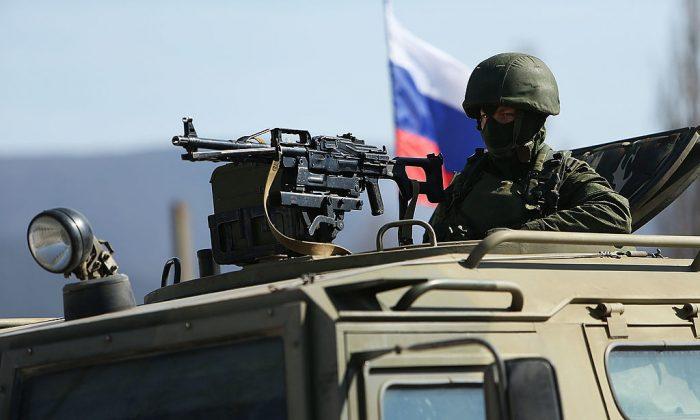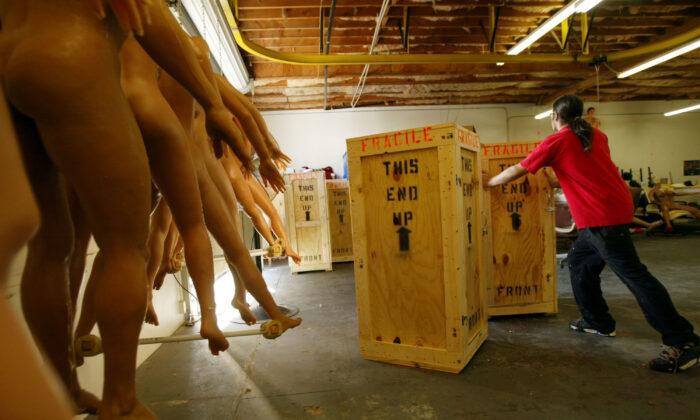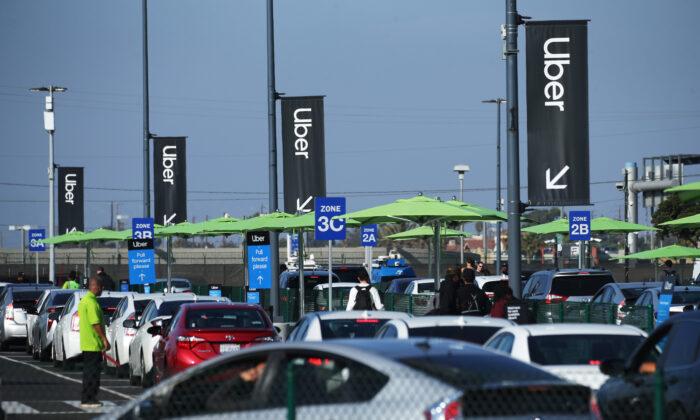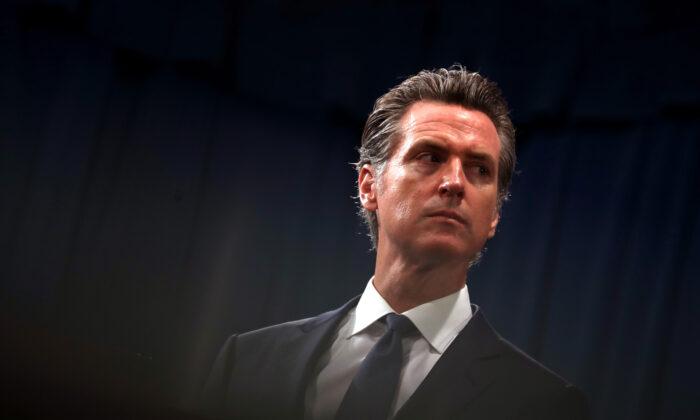Commentary
With the recent military standoff between the Ukrainian and Russian navies in the Black Sea—the Russians building up forces along their border with Ukraine, and the implementation of martial law in a third of Ukrainian oblasts—observers are waiting to see if this will pass or escalate the relative standstill in the war in Donbass.
What the United States and Russia must do to quell the unease in this situation is come to an agreement on a clear and permanent establishment of land and maritime borders between the Russian Federation and the Republic of Ukraine.
Since the Russian seizure of Crimea and the establishment of two pro-Russia breakaway states in eastern Ukraine, agreement over territorial control is fuzzy at best. This needs to end in order to ensure stability.
To understand the current set of events, we need to rewind back to 2014. We should remember that before the Euromaidan revolution in February 2014, the Ukrainian president, Viktor Yanukovych, was very much under the influence of Vladimir Putin’s Russia. After his ouster, a new, anti-Russian government took power, which eventually led to the election of current pro-West President Petro Poroshenko. Shortly thereafter, Russia’s annexation of Crimea through masked Russian troops without insignias was a last-ditch attempt to scoop up wherever they could after their puppet government in Ukraine collapsed.
Crimea, being majority ethnic Russian, was overwhelmingly in favor of the annexation. Additionally, Crimea plays a strategically important positional role for Russia’s military, as it has hosted the Russian Black Sea fleet in the city of Sevastopol since the years of the Russian Empire. Following the dissolution of the Soviet Union, the Ukrainian government allowed the Russian Navy to lease former Soviet naval facilities in the country until 2017. In 2010, the Yanukovych government extended the lease until 2042, but this became null after the annexation of the Crimean Peninsula.
The uprisings that followed in the oblasts of Luhansk and Donetsk were backlashes of the Ukrainian revolution and the Crimean annexation, as those regions have large ethnic Russian populations as well. The whole world knows without a doubt that the Russians are arming the rebel groups in these regions, which have set up their own de facto nation-states in their areas of control (the People’s Republic of Luhansk and the People’s Republic of Donetsk). This gives Russia a little more control of the land they lost after Yanukovych’s ouster.
The reality is, for the indefinite future, Crimea will be a part of the Russian Federation and the two “People’s Republics” will be under de facto Russian control.
Agreements and Concessions
The positive aspect from a Western perspective is that now, instead of the entirety of Ukraine being under Russian influence, only three small regions in the eastern part of the country are. What we can do is try to maintain the fragile, but largely holding, ceasefire between Ukraine and the two breakaway regions.By having a dialogue with Russia, mutual exchanges and agreements can be made that the United States, Ukraine, and Russia would most likely agree on.
The first point of agreement would be that the United States, Ukraine, and NATO should cease pressure on Russia to return Crimea to Ukraine. It will most likely never be returned, and it is a waste of energy to try to gain it back. The population of Crimea is overwhelmingly Russian and identify with Russia, not Ukraine. The only reason why Crimea ended up under Ukrainian control was due to a botched land transfer in 1954 by then-Soviet Premier Nikita Khrushchev from the Russian SSR to the Ukrainian SSR.
Recognizing Crimea as a legitimate part of the Russian Federation would be a win for Russia, but in exchange, the Russians must concede something.
The maintaining of the current ceasefire lines decided in the 2015 Minsk II Protocol between the Republic of Ukraine and the two “People’s Republics” should be upheld for an indefinite time until a future border can be agreed upon by both sides. In exchange for this, Russia should agree to allow the remainder of Ukraine to join NATO as a permanent member.
As the current Ukrainian government is currently very anti-Russia, pro-West, and has been conducting military exercises with the United States, this scenario has a high likelihood of happening. President Donald Trump’s arming and support of Ukraine has been much more overt and aggressive than former President Barack Obama’s. In addition to this, the establishment of U.S. military installations in Ukraine to counterbalance the Russian military presence in Crimea should be a staple of this agreement.
Many factors are at play in this potential agreement. Poroshenko is up for re-election next March and is suffering from low approval ratings due to allegations of corruption. Following the incident, he may hamper efforts to secure a deal with Russia in order to avoid looking weak and conceding to Putin’s demands by giving away Crimea, Luhansk, and Donetsk.
However, this may work in Ukraine’s favor. By playing a strong hand at the negotiating table, Poroshenko, with the backing of Trump and Secretary of State Mike Pompeo, may be able to placate Ukrainian voters by securing a deal that makes him come out looking strong.
Additionally, with the Mueller investigation still underway in the United States and the public eye on Trump, securing a deal like this would make Trump look pragmatic about the situation while still maintaining a strong stance against Russia. This would also play in Trump’s favor, as the 2020 election season is looming ahead.
This agreement would be a zero-sum scenario, as both sides would receive something they want, and lose something they want. It may not be an even exchange, but it will ease tensions between the two major powers and ensure the safety of Ukraine under U.S. protection while Crimea and the “People’s Republics” would be under Russian protection.
Ensuring stability in this region is vital to the interests of the United States and Europe, and would be the most realistic scenario to resolve this four-year territorial dispute, while leaving all parties involved with something to walk away from the table with.
Ian Henderson is a contributor to Shield Society, former director of outreach for The Millennial Review, and former development coordinator for PragerU.
Views expressed in this article are opinions of the author and do not necessarily reflect the views of The Epoch Times.






Friends Read Free